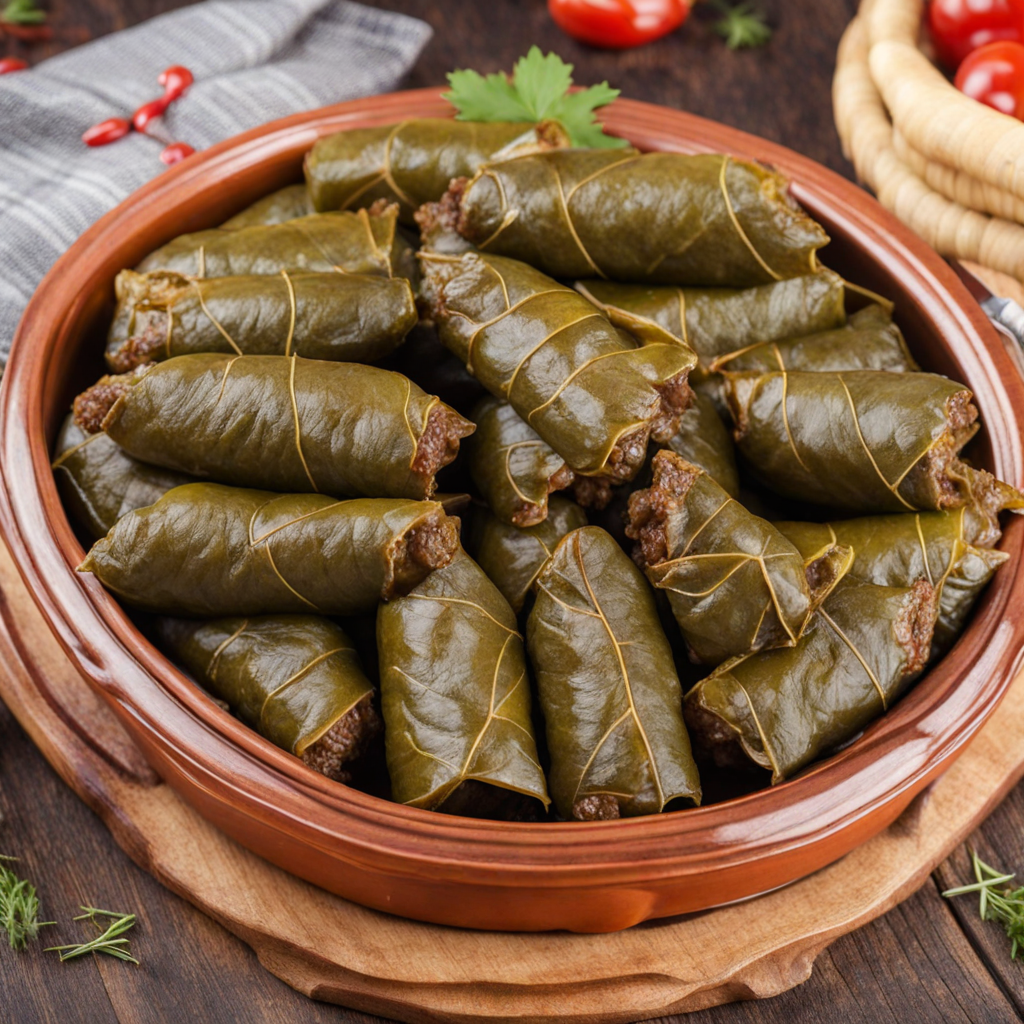Ohrid Cake
Охридска торта, or Ohrid cake, is a traditional dessert from North Macedonia, particularly associated with the picturesque town of Ohrid. This cake is not only a culinary delight but also a symbol of the region's rich cultural heritage. The origins of Охридска торта can be traced back to the early 20th century, where it was often prepared for special occasions and celebrations. The cake reflects the fusion of local ingredients and culinary techniques, making it a staple in Macedonian households and a beloved treat for both locals and tourists alike. The flavor profile of Охридска торта is a harmonious blend of sweetness and nuttiness, with a hint of citrus. The cake is known for its delicate layers that create a light yet indulgent experience. Each bite offers a pleasing contrast between the creamy filling and the slightly crunchy texture of the walnuts, complemented by the fragrant notes of lemon or orange zest. The balance of flavors makes it a perfect dessert for those who appreciate a nuanced taste experience. Preparation of Охридска торта is a labor of love, involving several steps to achieve its signature texture and flavor. The cake typically comprises multiple layers of thin pastry, often made from flour, eggs, and water, which are rolled out and baked until golden. The filling is where the magic truly happens; it consists of finely ground walnuts, sugar, and a hint of citrus zest, all combined to create a rich, nutty cream that is spread between the layers
How It Became This Dish
Охридска Торта: A Sweet Legacy of North Macedonia The culinary landscape of North Macedonia is rich and diverse, deeply intertwined with its historical, cultural, and geographical tapestry. One of the most beloved desserts hailing from this Balkan nation is Охридска торта (Ohrid Cake). This delightful confection not only tantalizes the taste buds but also embodies the spirit and traditions of the region, making it a symbol of cultural pride and heritage. #### Origins: A Taste of Ohrid The origins of Охридска торта can be traced back to the picturesque town of Ohrid, located on the shores of Lake Ohrid in the southwestern part of North Macedonia. This town, often referred to as the "Jerusalem of the Balkans," is renowned for its historical significance, stunning architecture, and natural beauty. It is a UNESCO World Heritage Site, celebrated for its ancient churches, monasteries, and vibrant maritime culture. The cake itself, with its layers and rich flavors, is said to have been inspired by the region’s rich history of trade and cultural exchange. The blend of local ingredients and culinary techniques reflects the influences of various civilizations that flourished in Ohrid over the centuries, including the Byzantine, Ottoman, and Slavic cultures. The dessert likely evolved from older recipes, adapting to the tastes and preferences of the local population while retaining its unique character. #### Cultural Significance Охридска торта is more than just a dessert; it is a symbol of celebration, family, and community in North Macedonia. Traditionally, it is prepared for special occasions such as weddings, birthdays, and religious holidays, making it a staple at festive gatherings. The preparation of the cake often brings families together, as generations share recipes and techniques, fostering a sense of unity and continuity. The cake's intricate layers and rich flavors also carry a cultural significance. Each layer represents a different aspect of life and community. The combination of nuts, sugar, and cream is reminiscent of the abundance and hospitality characteristic of Macedonian culture. When served, the cake becomes a centerpiece that not only delights the palate but also serves as a conversation starter, bridging connections between people and generations. In recent years, Охридска торта has gained recognition beyond the borders of North Macedonia, becoming a symbol of the nation's culinary heritage. It is often presented at international food festivals and cultural events, showcasing the rich traditions of Balkan cuisine and inviting curiosity and appreciation from food enthusiasts around the world. #### Development Over Time The evolution of Охридска торта is reflective of broader trends in North Macedonian gastronomy. As social dynamics changed, so too did the ingredients and preparation methods of traditional dishes. The cake has adapted to modern tastes while still honoring its historical roots. In its traditional form, Охридска торта typically consists of multiple layers of sponge cake, filled with a rich combination of walnuts, sugar, and egg whites. The cake is often topped with a sweet, creamy frosting made from milk and sugar, which adds a silky finish. Over the years, variations have emerged, incorporating different flavors and ingredients, such as chocolate, fruits, and even liqueurs, allowing for a more contemporary interpretation of this classic dessert. The accessibility of ingredients has also influenced the cake's development. In recent decades, as globalization has made various products more readily available, bakers have experimented with new techniques and flavors, resulting in innovative takes on the traditional recipe. While some purists maintain the classic preparation, others embrace creativity, leading to a broader range of interpretations that still pay homage to the original. Additionally, with the rise of the health-conscious movement in the 21st century, there has been a push towards lighter and healthier variations of traditional desserts. Some bakers are now offering versions of Охридска торта that use less sugar, incorporate natural sweeteners, or substitute traditional ingredients with healthier alternatives. This adaptability ensures that the cake remains relevant in a modern culinary landscape while still celebrating its deep-rooted traditions. #### The Cake Today: A Culinary Icon Today, Охридска торта stands as an emblem of North Macedonian culture and culinary artistry. It is often found in local bakeries, restaurants, and homes, enjoyed by both locals and visitors alike. Its presentation is often an art form in itself, with bakers taking great care to ensure that the layers are perfectly aligned and the frosting is beautifully smooth. In recent years, the cake has garnered attention on social media platforms, where food bloggers and culinary enthusiasts share their own versions, complete with stunning photographs and personal anecdotes. This visibility has not only contributed to a resurgence of interest in traditional Macedonian desserts but has also fostered a sense of community among those who cherish the art of baking and the stories behind their favorite recipes. Furthermore, the cake's ability to transcend borders and connect with people from different cultures speaks to the universal language of food. It serves as a reminder of the shared experiences that bring people together, regardless of their backgrounds. As the world becomes increasingly interconnected, the legacy of Охридска торта continues to grow, inviting new generations to explore and cherish the culinary heritage of North Macedonia. #### Conclusion Охридска торта is more than a mere dessert; it is a testament to the rich cultural history of North Macedonia. From its origins in the charming town of Ohrid to its place at the heart of celebrations, this cake embodies the flavors, traditions, and stories of a nation. As it evolves and adapts to modern tastes, it remains a cherished symbol of community and continuity, inviting all who encounter it to partake in a sweet slice of Macedonian culture. Whether enjoyed at a family gathering, a festive holiday, or a casual afternoon coffee, Охридска торта offers a delicious glimpse into the heart of North Macedonia's culinary legacy.
You may like
Discover local flavors from North Macedonia







